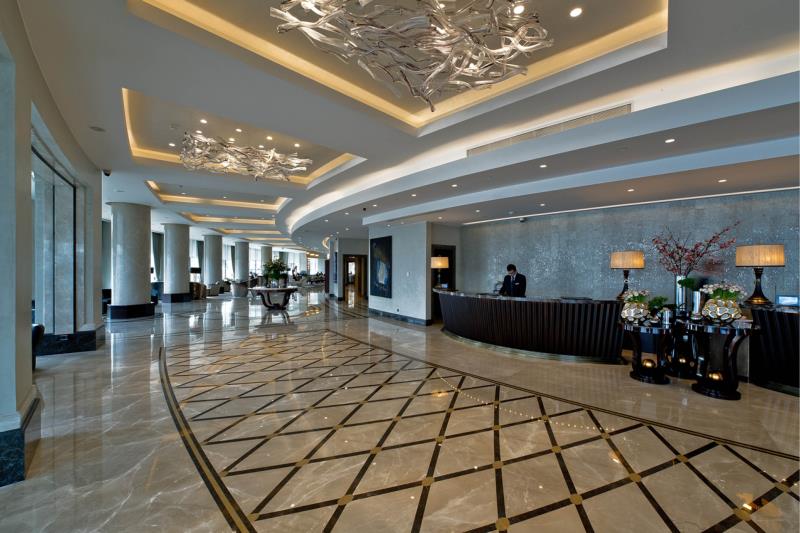
THE GRAND TARABYA
Grand Tarabya Hotel, which was opened in 1954 as one of the first 5-star hotels in Istanbul, reopened its doors to its guests in May 2013 as The Grand Tarabya Hotel after the restructuring works carried out with the investments of Bayraktarlar Holding.
While the façade of the building carries the characteristic architectural lines of its period, it also integrates with the natural form of the coastline. The façade lighting principle is aimed to emphasize this characteristic structure. The balconies of the bedrooms on the front facade have regular planning, size, and form. In addition, balcony ceilings were designed as outward inclined. In the lighting project, the sloping balcony ceilings were illuminated and the rhythm on the facade was tried to be emphasized. The luminaires work depending on the automation system created for façade lighting. It is programmed to be controlled separately or together in scenarios prepared for use on special days or other days of the year. The podium carrying the bedroom floors on the front of the hotel is illuminated with a linear light band, emphasizing the form of the building and its relationship with the coastline.
It was suggested that the large deaf surface of the façade facing the pool terraces at the rear of the facility should be used as a message surface for those who look at the façade from behind at special times. In this design, the deaf façade was differentiated with a Video Mapping application and turned into a movable screen to be used on special days and times. For this application, which is specially studied in the dimensions of the facade at selected special times of the year, a special platform resistant to external conditions was prepared within the rear terrace landscape area, and it was aimed to reflect the image from an appropriate angle. Since one of the most important aspects of the lighting systems designed on the front and rear facades is that no light enters the rooms, all solutions were prepared by testing on-site and projecting with relevant expert teams according to the location.
Rooms and corridors, which are the places that cause the highest energy consumption in the hotel and need to be increased in energy efficiency, have been prepared by the architectural form. Rooms and corridors are functional, have a minimal effect on the facade lighting, and will not impair night vision for guests looking at the Bosphorus from the inside, all with LED light source, specially produced products.
While the ground floor, lobby, junior ballroom, and restaurant in particular were shaped with plain language based on nautical themes, the lighting design was aimed to provide parallelism in this direction. These special places facing the sea, it is aimed to increase visual comfort by minimizing the light reflection on the glass with special settings and specially designed spots.
In the SPA area, in the massage rooms designed with a personalized color therapy concept, and in all public spaces, detail-specific LED light sources have been specially designed. Since the bath section is in a location that does not receive daylight, a lighting design was developed that will keep the old Turkish baths alive. In this developed design, an armature resembling the elephant's eye in the old baths was designed and impressive light beams were obtained. A relaxing atmosphere was designed with a combination of golden yellow and green colors in the indoor pool.
In the lighting system designed in the restaurant with the theme of fish and the sea, located by the beach, special spots that do not glare and reflect the warmth of copper color that dominates the space was designed. It is aimed to create a soft border line with the light of bollards on the terraces of the podium that opens out from the bar and junior ballroom. Specially designed bollards are double-functional and can meet the need for sockets on the terrace in addition to their lighting task.
While the building, which was one of the most popular Istanbul hotels of the period, was the Ecole symbol of Tarabya bay where foreign heads of state, artists, and famous guests were hosted, with its renewed name, The Grand Tarabya was included in the "Leading Hotels of the World" system before it was opened, and it was included in the "Leading Hotels of the World" system. succeeded in becoming one of the hotels.
You can check our Portfolio page to review other photos of the project.
http://na-lightstyle.com/Portfolio/144
